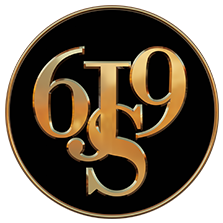The value of a diamond is based on four main characteristics known as the 4 C’s – clarity, colour, cut and its weight in carats. It is these four characteristics that determine the value of the diamond. The visual appearance of a diamond is determined by its colour and in particular its cut.

Diamond Carat

The size of a diamond is indicated by its weight and the weight of a diamond is given in carats. One carat is equal to one fifth of a gram. If diamond weighs less than one carat, its weight is given in points i.e. one hundredth of a carat. For example, a half carat diamond weighs 50 points and a three-quarter carat diamond weighs 75 points. If a diamond weighs more than one carat its weight is given in carats and decimals. For example, a 1.08 carat diamond weighs 1 carat and 8 points.
The price of a diamond increases quite a bit when its carat weight exceeds 50 points, 75 points or 1 carat. For example, the difference in price between a diamond that weighs 49 points and one that weighs 50 points is often greater than the price difference between a diamond weighing 48 points and 49 points. Larger diamonds are rarer and hence the price will be higher i.e. as the carat weight increases so does the price per carat. For example, a 2 carat diamond will be more than twice the price of a 1 carat diamond with the same cut, clarity and colour.

Diamond Colour

The value of a diamond is based upon how colourless it is i.e. the less colour, the higher its value. There are exceptions however to this rule such as fancy coloured diamonds, like pink and blue ones.
Most diamonds are not colourless but have tinges of other colours such as yellow or brown in them. The colour of a diamond refers to how noticeable these colour tinges are. Therefore the more noticeable the colour, the lower the value of the diamond and the less noticeable the colour, the more rare it usually is and the higher its value. That said, if a diamond has tints of a colour other than yellow or brown, such as blue, purple or red, it is considered to be “fancy coloured” and so is graded differently.
Diamonds with tints of yellow or brown are graded using a finely calibrated scale that compares it to a master set.

Diamond Clarity

Natural diamonds found in the earth have been formed under extreme heat and pressure and often contain unique marks which are either internal (inclusions) or external (blemishes). Diamonds are rarely perfect and when formed in the earth, tiny crystals may get trapped inside, or the diamond may have an uneven surface. Inclusions are flaws inside the diamond and blemishes are nicks and scratches on the surface of the diamond.
The clarity of a diamond refers to how flawless the diamond is i.e. its lack of inclusions or blemishes. The more difficult it is to see the flaws, the more rare the diamond. If the diamond’s inclusions or blemishes can be seen with the naked eye the lower will be its score on the clarity scale. If more magnification is needed to see the diamonds inclusions or blemishes the greater will be its value. Flawless diamonds are extremely rare.

Diamond quality is graded like so:
F – Flawless
IF– Internally Flawless
VVS1 – Very Very Slightly Included (inclusions visible from the top of the diamond)
VVS2 – Very Very Slightly Included (inclusions visible from the sides of the diamond)
VS1 – Very Slightly Included (inclusions visible from the top of the diamond)
VS2 – Very Slightly Included (inclusions visible from the sides of the diamond)
SI1– Slightly Included (inclusions visible from the top of the diamond)
SI2 – Slightly Included (inclusions visible from the sides of the diamond)
I1 – Included (inclusions visible to the naked eye)
I2 – Included (inclusions easily visible to the naked eye)
I3 – Included (inclusions are significant, very visible and affects the beauty of the diamond)
It is very unusual for an ‘I’ grade diamond to be used in an engagement ring, but you must remember a jeweller’s standards can be variable. Diamonds of SI2 and above are of good quality, but also remember the price increases as you go up the grade scale.
Diamond Cut

The attractiveness of a diamond is often based on how it sparkles in the light. The sparkle of a diamond is dependent on how it is cut i.e. its symmetry, polish, durability and proportion of its parts, which all determine how light travels through the diamond and reflected back to your eye.
The sparkle of a diamond depends on the proportions between its table size, crown angle and pavilion depth. A diamond is cut in such a way as to maximise its brightness e.g. if the diamond’s pavilion is cut too shallow or too deep relative to its crown, light may seep from one side or the bottom of the stone, and so reduce its sparkle. The quality of a diamond’s cut is dependent on three light effects on the diamond. The first is its brightness i.e. the combination of all white light reflecting from the stone, the second is the diamonds coloured flashes and scintillation, and the third is the overall pattern of bright and dark areas when the diamond is moved.

